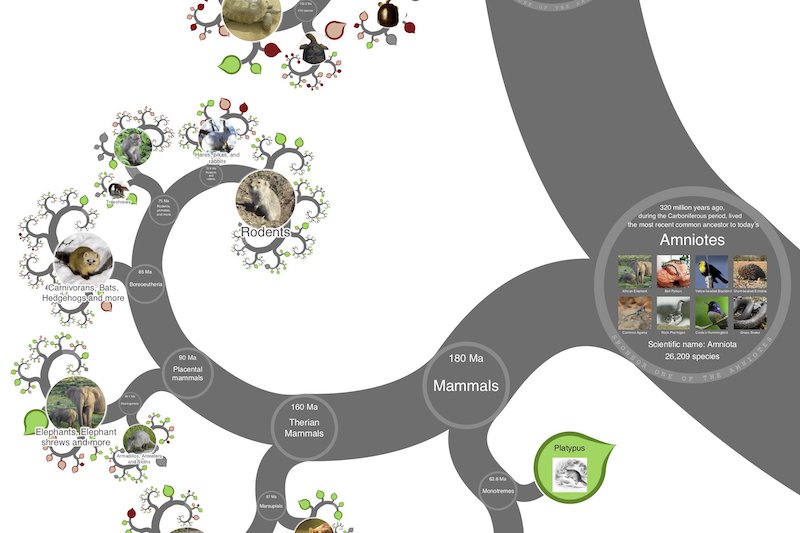The Tree of All Known Life Published Online
A traveler is published to explore all life on earth, the evolutionary history of life and the risk of extinction for living things.
The OneZoom rover has mapped the link between 2.2 million species, the closest to a single view of all species determined by science.
The interactive tree of life allows users to zoom in on any genre and explore their relationships with others in seamless visualization on a single web page. Traveler also includes images of more than 85,000 species and their vulnerability to extinction in places known to exist.

OneZoom, London biodiversity researcher at Imperial College, Dr. James Rosindell and Oxford University evolutionary biologist Dr. Developed by Yan Wong. In a paper published in Methods in Ecology and Evolution, Dr Wong and Rosindell presented the results of more than a decade of work and are gradually creating what they see as the “Google Earth of biology.”
Big data
University of Oxford’s Big Data Institute, Dr. “By developing new algorithms for visualization and data processing and combining them with ‘big data’ collected from multiple sources, we have created something beautiful,” says Wong. It allows people to find their favorite creatures, like the golden mole or giant sequoias, and see how evolutionary history has connected them to create a giant tree that contains all life on Earth.”
From the Department of Life Sciences at Imperial, Dr. “We’ve worked hard to make the tree easier to discover for everyone, and we hope to send a strong message: much of our biodiversity is under threat,” says Rosindell.
The ‘leaves’ representing each species in the tree were color-coded according to their extinction risk: green for non-threatened, red for endangered and black for recently endangered. However, most of the leaves on the tree are gray, meaning they haven’t been evaluated, or scientists don’t have enough data to know about the risk of extinction. Even among the species that science has described, only a small fraction have been studied or the extinction risk is unknown.
Dr. “There is still an extraordinary amount of research that needs to be done. Building the OneZoom tree of life was only possible with advanced methods for collecting and combining existing data; it would be impossible to arrange all this by hand.” says.
Usable by Everyone
The OneZoom navigator is configured to work with touchscreens, and the developers have made the software free for download and use by educational institutions such as museums and zoos.
Dr. “Two million species may seem like a number too large to visualize, and no museum or zoo can contain them all! But our tool can help represent all Earth types and connect visitors to their plight. Now that this project is complete and ready to go, we hope many venues will be interested in using it to complement their existing displays.” says.
Drs Rosindell and Wong established a OneZoom charity to use trees of life to “advance public education in evolution, biodiversity and conservation of life on Earth.”
Uniquely, every leaf on the tree can be used for sponsorship to support this charity, allowing anyone to ‘adopt’ a species and continue OneZoom’s mission. More than 800 “leaves” are currently supported by individuals and selected organizations, and many have personal messages of how they feel connected to nature conservation.
tour the tree of life
The team also integrated the tree with data from the Wikipedia project to reveal the ‘popularity’ of each genre based on how often Wikipedia pages are viewed. Dr. “Perhaps unsurprisingly, humans peaked in popularity, but were several times replaced by the second most popular wolf: the gray wolf—the ‘species’ that includes all domesticated dogs,” Wong said.
In the plant world, hemp ranks first, followed by cabbage, potatoes and coconuts. The most popular ray-finned fish were sportfishing species, particularly salmon and trout.
Now that the tree is complete, the team hopes to create bespoke ‘tours’ and experiences of species connected in creative new ways. They created a special screen capture tool for easy recording and sharing of user-created tours.
Dr. “With OneZoom, we hope to provide an entirely new way for people to appreciate evolutionary history and the beauty and vastness of life on Earth,” Rosindell said. says.
Article:: Wong, Yan Wong et al. (2021). Dynamic visualisation of million‐tip trees: The OneZoom project, Methods in Ecology and Evolution.
